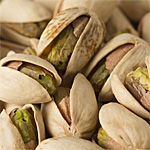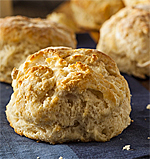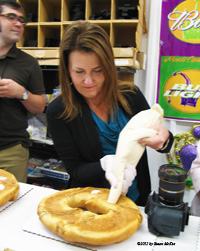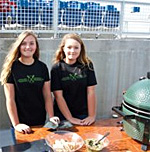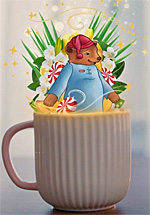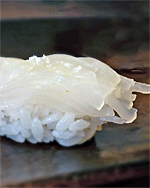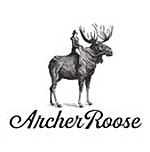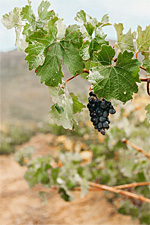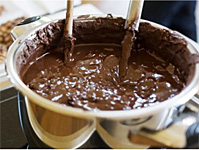How Long is a Crowler Good?
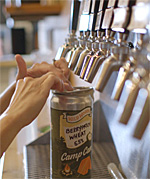 Special to Road Trips for Foodies
Special to Road Trips for Foodies
By Andy Sparhawk for Craft Beer Muses
“How long is my crowler good?” is a common question from beer lovers.
Bottles, cans, crowlers, growlers or kegs, craft beer comes in a variety of containers for you to enjoy outside of the brewery taproom. While each beer vessel fulfills the same purpose, each requires some different approaches to storing.
When it comes to shelf life, beer is more like a loaf of bread than a bottle of wine or whiskey. Beer’s perishability means it’s best enjoyed soon after it you take it home.
By all means, beer should go into a refrigerator of some sort; keeping beer cold is an important part of the equation. Here are some other considerations to keep beer tasting fresh.
Beer Bottles
Quite possibly the most recognizable symbol of beer is a brown or green glass bottle. For centuries the sturdy and beautiful beer bottle has held our favorite beers affixed with a stopper to keep the contents from spilling out–the modern version of which is the pry-off crown cap. Additionally, non-reactive glass can be reused and recycled and never imparts flavors into the beer.
While beer bottles are great containers for beer, their transparency offers a drawback by allowing light to react with the beer. For this, it is important to avoid light contact with glass beer bottles. Store them out of UV light to avoid acceleration of beer flavor degradation. In the best conditions you can expect beer bottles to hold up well, but you should drink bottled beer within three to six months.
Beer Cans
Aluminum beer cans are excellent containers for beer because they offer total light protection that brown or green bottles cannot. Additionally, you can take cans many places that glass can’t go, like parks and beaches.
While they protect beer from harmful UV light, cans won’t protect beer from excessive heat. If you can keep them cold, cans, like bottles, can be expected to last for months, but again that is very dependent on the beer itself, as well as the external factors like agitation.
Growlers
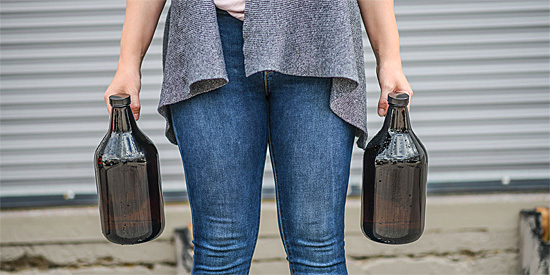
Growlers are most often glass bottles with screw caps that most often hold 64 or 32 ounces of beer. While growlers have a long history, microbreweries that do not package their beer have made the growler a popular beer container.
Despite a growler essentially being a beer bottle, the guidance on how to best store differs quite a bit. Specifically, many glass growlers are not pressure rated and may potentially burst if over pressurized. As the beer warms, the pressure within the container increases presenting a very serious danger of the glass bursting. Keep growlers cold and never leave one in a hot car for an extended period.
Growler Safety (From the Draught Beer Quality Manual)
- When buying a growler, ask if the glass growlers offered are pressure rated, or if there are any other growler offering specifically approved for carbonated beverages.
- Avoid over filling. While a little more beer seems like a bonus, overfilling a growler can increase the chances of a glass growler failure. Ensure your server leaves at least 5 percent of head space in the growler.
- Encourage the use of plastic screw caps over metal caps as it is believed a plastic cap will fail before the glass does, as opposed to the metal screw cap that may not.
- Keep growlers in a cool, dark space.
- When reusing growlers, do your part to clean the growler and inspect it for damage. Contamination may start a refermentation of beer in the growler.
Growlers represent a fun way to purchase and enjoy beer, but growlers are meant to be enjoyed shortly after you buy them. Drink growlers within a couple days of filling.
Crowlers
Crowlers are an aluminum can substitute for glass growlers, and most often hold smaller quantities of beer, generally 32 ounces. With the popularity of cans and the mobility of cans, the crowler is a great choice for picking up a variety of craft beers.
But don’t confuse crowlers for beer cans. They aren’t necessarily packaged the same way, making the shelf life of a crowler limited like a growler. Be sure to keep crowlers cold and drink fresh within two or three days.
Kegs
Many consider draft beer the closest thing to beer from the brewery – at home. Stainless steel kegs, as part of a draft system, dispense beer in a far greater amount than any other beer container. While this is an obvious plus, especially for a party, drawbacks include the need for a dispense plan as well as more space and energy to keep the beer cold. The need for a plan to extract beer from the kegs is compounded by the need for a balanced draft system that dispenses a beer with the right amount of foam to each pour.
In a pinch, a large bucket of ice and a party pump are perfectly acceptable ways to cool and dispense beer, especially for a party. That said, many party kegs end up being plagued with excess for most of the party. Here are some don’ts for party kegs.
- Don’t pick up the keg the same day as your party. The jostling that’ll happen as you transport the keg from brewpub to the party will cause a lot of foam. The keg needs at least 24 hours to settle.
- Don’t leave the keg warm. As beer warms the pressure increases and results in overly foamy beer.
- Don’t over pump/pressurize the keg. Before pumping the keg tap, release some pressure to see if it might pour fine. Not everyone needs to pump the keg before pouring a beer.
All beer containers present benefits and challenges. Understanding how to treat each vessel best will go a long way in ensuring the beer you choose is enjoyed at peak quality and freshness. Light and temperature are the major threats to beer package quality, but you can defend against both. But no container can protect your beer from age, so it is important for beer to be enjoyed quickly and always responsibly.
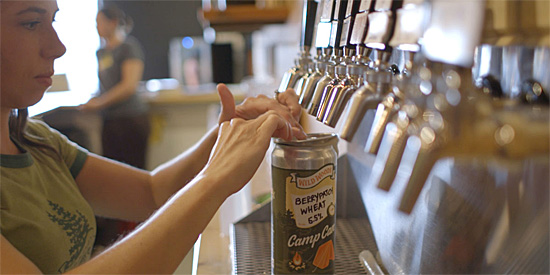
Andy Sparhawk, the Brewers Association’s craft beer program digital content editor, is a Certified Cicerone® and BJCP Beer Judge.
(Photos courtesy of CraftBeer.com)


